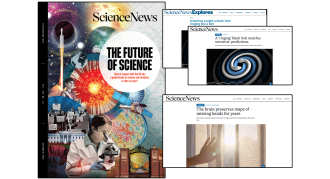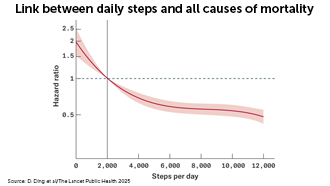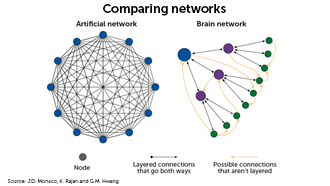Search Results

Ringing Black Holes and Brain Scans
In this educator guide, you’ll find lesson plans matched to articles from the December issue of Science News that ask students to answer questions about gravitational waves and signal-to-noise ratios and to write a scientific question that could be answered using brain scanning technology.
The brain provides answers
Brain scans can help scientists answer questions about how the brain receives information from parts of the body and controls them. In this short activity, students will think of a question that could potentially be answered by brain scans and write a scientific question.
The toll of a black hole
Scientists measured the gravitational waves produced by two colliding black holes. Learn how familiar analogies, such as the toll of a bell, can help comprehend events at the intergalactic scale. Answer questions about the importance of signal-to-noise ratios in science. Then delve deeper by explaining how changing the individual values of a ratio affects the overall ratio.
Claim, Evidence, Reasoning (CER) for any article
Use this claim, evidence, reasoning (CER) template with any Science News or Science News Explores article to have students identify and evaluate a scientific finding from a recent study.

Mapping the Mississippi
Freshwater fish make vast treks, but their migrations remain hidden beneath the surfaces of rivers. This invisibility has left freshwater fish largely overlooked, even as their populations worldwide have plummeted. Now, global “swimways” for migratory fish are emerging as an important conservation focus.

How Venus is Morphing and a Lightning Lab
Use these lesson plans paired to articles from the December/January issue of Science News Explores to learn about how the geology of Venus compares to Earth’s and do a short electrostatics lab to help students understand what causes lightning and how it compares to a megaflash.
Lightning lab
Lightning is a familiar natural phenomenon, but what causes it? In this activity, students will do a short electrostatics lab with sticky tape. They will also compare what happens in regular lightning with what happens in a megaflash.
The case of the surface-morphing planet
Scientists noticed Venus’s weirdly shaped mountain ranges decades ago, but until recently their origin has remained a mystery. Learn how researchers apply computer-modeling technology to existing data, revealing patterns suggesting what might have created such geological features. Answer questions about plate tectonics and discuss how our knowledge of Earth-like processes can help us understand the mysterious geology of other planets.

Take a hike
Walking just 7,000 steps per day can lower a person’s risk of certain health issues, according to a new study. Even a small increase in steps per day lowered health risks.

Wiring the mind
Researchers are drawing inspiration from the brains of creatures from worms to humans to develop more efficient, more capable forms of AI.
Developing dioramas
In this activity, students will create their own dioramas. To do this, students will observe their local ecosystem and take pictures of parts of their ecosystem that they believe tell a story. Students will then learn about how dioramas can be used to tell scientific or historical stories and will convert their ecosystem stories into 3-dimensional dioramas.

The rise of male contraceptive options
Contraceptive pills for women emerged in 1960, followed by hormonal implants, patches, vaginal rings and IUDs. But no new contraceptive methods have become available for men. New research could change that in the next five to 10 years.